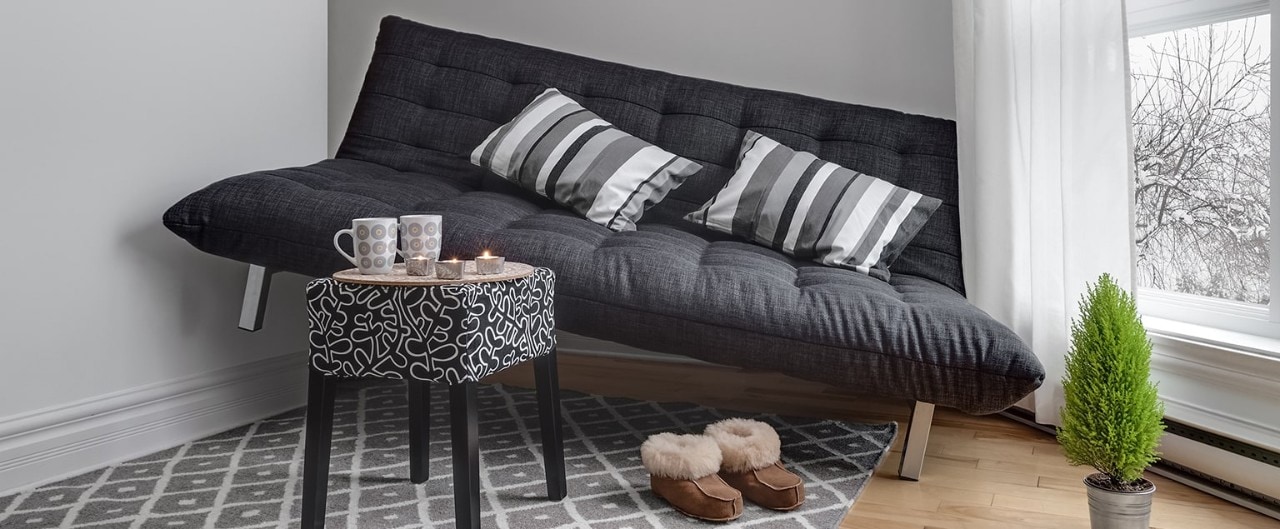

is it time to upgrade your living situation? the case for moving…or staying
5 questions that will tell you if it’s the right time to ‘up’
Perhaps stepping on that Lego brick was the last straw. Or maybe it was arriving at work late because you had to wait to use your own bathroom, again. The signs that it’s time to upgrade your living situation are often immediate – and stark.
This is the case for those living in apartments (“I cannot tolerate my neighbor’s music for one more night!”) or in a starter home (“Where did all our cabinet space go?”). The typical American undergoes nearly 12 moves over a lifetime, according to U.S. Census Bureau data1 – that can be as frequent as every five years. So, if you’re typical, chances are you’ve been thinking about a new place to rest your head.
Upgrading to a new home – an improvement, or not?
Buying a home, of course, is not a knee-jerk decision. Your next residence will determine not only your happiness, but also your economic security, for years.
Therefore, the first question to ask if thinking about upgrading your living situation isn’t a “where” or “what” one. It is when. If you are unsure whether it’s time to move to your “next” home, the answers to these five questions could help.
When will you be financially ready? In addition to a mortgage, a housing payment will include property taxes and insurance, which are usually applied in an escrow. These can increase a mortgage payment by hundreds of dollars. A good rule of thumb is to spend no more than 30% of monthly household income on mortgage payments. So if the household income is $10,000 a month, then the total monthly mortgage should not exceed $3,000.
When are the best rates? If interest rates are high and the buyer is considering a long-term, fixed-rate mortgage, it’s worth researching the indicators that contribute to rate changes. These include inflation, which can also affect housing prices, and whether the U.S. Federal Reserve is expected to review rates. The supply of credit also plays a role – the more a bank can lend, the lower its rates will likely be.2 Tip: Shorter-term mortgages tend to carry lower interest rates. You can check today’s rates on our mortgage page.
When do you plan to add family (or non-family) members? If there is a chance the household will expand, plan for it – and not just babies, but elderly parents, potential roommates, or boomerang kids. The share of nonfamily households in the U.S. rose to 35% in 2020 from 15% in 1960. Further, 26% of adults ages 25 to 29 were living with their parents in 2017, compared with 21% in 2010.3
When do you plan to change a job or “office” location? If a homeowner is learning a new skill, getting an advanced degree, or simply unhappy at work, then a job change that could require a move is probably in the near future. Workers, regardless of age, change jobs every 4.2 years, on average, and many relocate as a result. But a lot of people also are moving simply because they can now work from home, any home – 20% more Americans moved in 2021 from 2020 for this reason.4, 5
When will you be an empty nester? Is the upgraded home going to be your forever home? The median age of an empty nester is just 48.9. And many realize as they get older that it isn’t as easy to keep up with the work and maintenance of a larger home. The bigger the house, the bigger the expenses as well – even if it’s paid off – due to taxes, maintenance, and utilities.6


A sweet home is a home that fits
Where you rest your head in the coming years should not keep you up at night. The right home offers security, comfort, and an outlet for joy. Upgrading when the time is not right could turn a home into a stressor.
If you still aren’t sure if the time is right for you, talk to your banker in candid terms about your financial flexibility, goals, and plans. First Financial Bank’s handy mortgage lending site offers interactive payment calculators, budgeting tools, a Q&A, and instructive guides on what to expect.
In the end, you may buy that house with the spare room that can be converted into a playroom for the Legos. Or, you may decide it’s better for now to invest in a sturdy pair of slippers.
You can find and contact a nearby First Financial Bank mortgage loan officer here.
To read our blog, “Is it better to buy or rent your home?” click here.